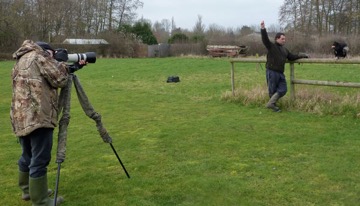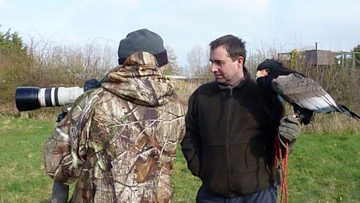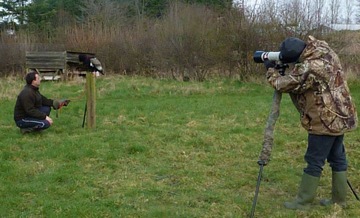Here at the Suffolk Owl Sanctuary we pride ourselves on providing a safe haven for all our resident birds of prey and for the wild raptors that are brought into our hospital. Imagine our surprise though, when Andy announced that we had a feathered friend of a completely different variety nesting in front of one of the aviaries.
To set things in perspective, it is undoubtedly a bird-eat-bird world out there as far as raptors are concerned. Basically, if you’re a bird of prey then anything smaller (or slower) than you can potentially be considered as lunch. The Peregrine Falcon is renowned for its swiftness, often reaching speeds of 150mph or more during its characteristic hunting stoop or dive. Historically the Peregrine is also known as the ‘Duck Hawk’, which makes it all the stranger, then, to find a Hen Mallard serenely nesting right up close to the aviary of 'Comet', one of our display falcons.
All birds are sensitive when it comes to breeding, which is why when our resident birds are nesting, their aviaries don’t have their regular clean-out over the period in order to avoid disturbing or distressing them. Some birds won’t lay at all if there's a hint of danger in the air and some simply leave the nest if they feel threatened, so to see this little Hen Mallard placidly resting right beneath the roost of one of her greatest predators seems a little ironic! Fortunately, we know that she is totally protected from being Comet’s repast at any time - but does she know that?
Anyway, it’s a lovely sight to see her nestling among the daffodils and she didn’t even so much as flutter a wingtip when I cautiously pointed the camera in her direction! We will be monitoring her closely and look forward to being able to announce the patter of tiny webbed feet - a first for the Suffolk Owl Sanctuary!




























































